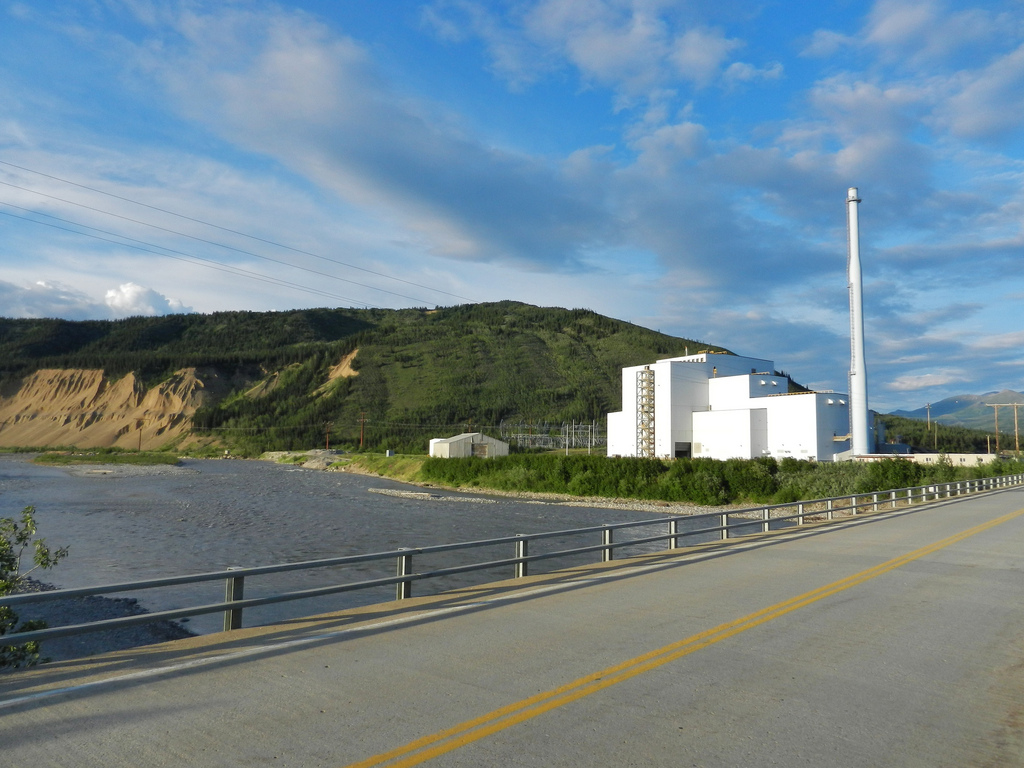
Golden Valley Electric Association customers can expect a rate hike to pay for new federally required pollution controls. The EPA’s emissions control requirements announced yesterday, will be phased in over coming years in an effort to cut greenhouse gas emissions from power plants.
The federal Environmental Protection Agency’s proposed rule will require all U.S. powerplants to cut production of carbon dioxide by 30 percent by 2030, based on their output in 2005.
The EPA hadn’t released details of the new rule on Friday, and the agency’s spokesperson in Seattle didn’t respond to a request for comment. But GVEA’s CEO Cory Borgeson says all of the co-op’s coal-fired powerplants, and at least some of the other fossil-fuel fired plants, will not meet the stringent standards of the new rule.
“We think it’s very possible that the limitations would affect not only our coal plants, but also our plants fired with naphtha, diesel, …” he said.
About 60 percent of GVEA’s electricity is generated by coal and oil, including diesel. So, Borgeson says, the utility will be required to spend money to bring its powerplants into compliance with the new rule. And more rate hikes will be required to cover those costs. How much, he can’t yet say.
But Borgeson cited as an example the $92 million that GVEA is now paying on emissions controls for the coal-fired 50-megawatt Healy 2 powerplant. That work is required under a deal the co-op cut last year with EPA and the state. Those controls, however, will not remove carbon dioxide or CO2 from the plant’s emissions. So Healy 2 will be out of compliance with the new rules when it’s fired-up in about a year. And Borgeson says it’s not known how much the additional emissions controls for the plant will cost.
“So, you go in and put in additional controls to take out CO2, or limit those emissions, and – it’s just hard to speculate on the cost,” he said. “But, ultimately, it’s a big cost.”
Environmentalists counter that ratepayers nationwide already are paying for the costs associated with greenhouse gas emissions. Colin O’Brien, an attorney with the environmental-advocacy group Earthjustice, said in November interview that those so-called “hidden costs” come in the form of, for example, increased insurance and medical payments to repair damage from extreme-weather events or health costs associated with poor air quality.
“People pay the cost of energy in several different ways,” O’Brien said. “One is the bill that they get from the utility. Another might be the money that they pay to their healthcare provider, if they have asthma or another lung or heart condition that’s a consequence of the air pollution that comes from coal production or coal combustion.”
The new CO2 rule is intended to encourage utilities to convert from coal, which provides nearly half of the nation’s electricity, to natural gas. Borgeson says that’s not an option here.
“That’s something that will still don’t have in the Interior,” he said. “And even if we do get it, it’s going to be at a much higher cost than the rest of the nation.”
The Wall Street Journal reported Sunday that the proposed rule is scheduled to go into effect in 2016.
Between now and then, Borgeson says GVEA will be making its case to EPA that the co-op should be granted exceptions and/or extensions for compliance.
He says GVEA will support litigation that he expects the utility industry, among others, will be filing in opposition to the new rule in the coming months.
